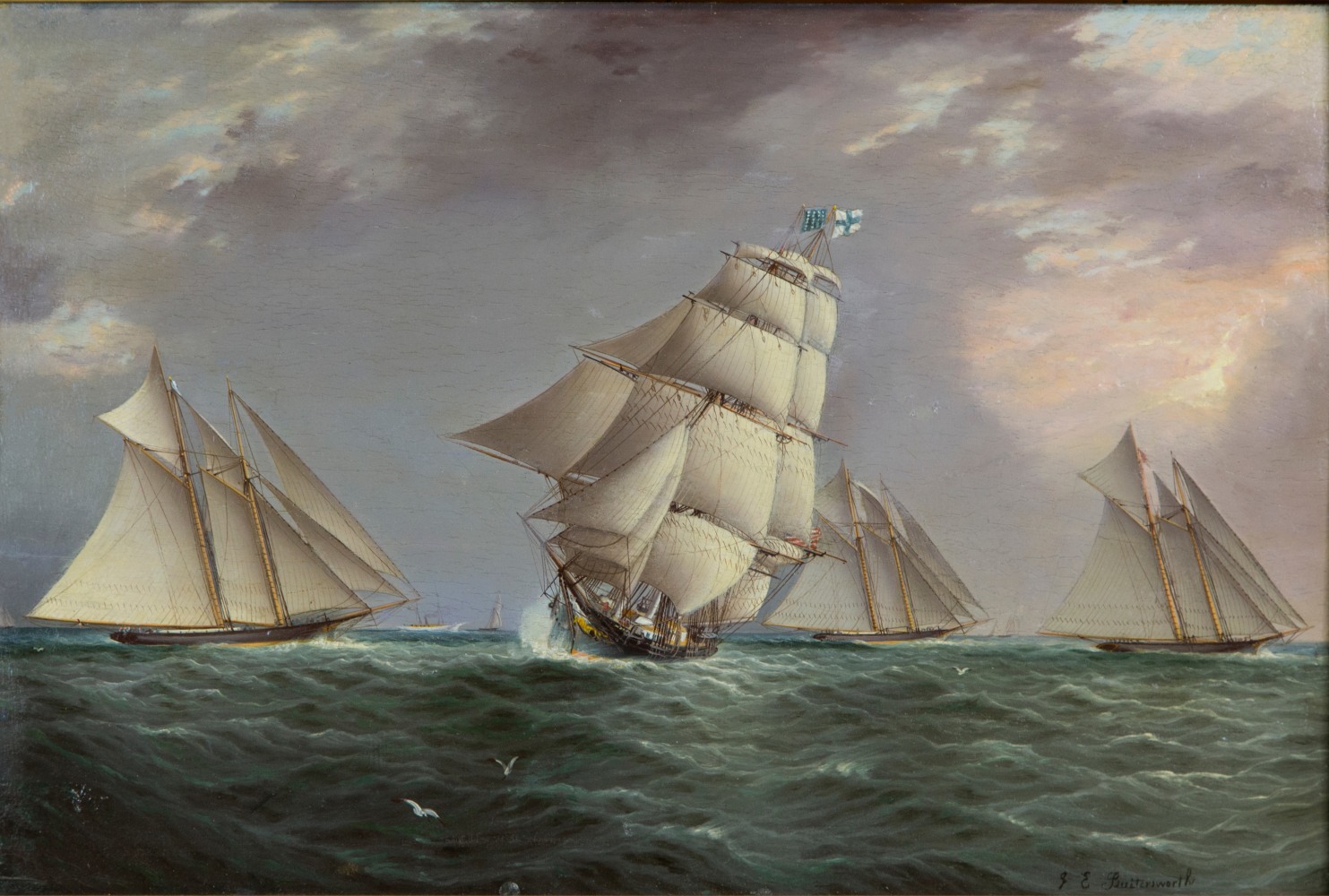Known for marine paintings from subjects he observed in the waters off New York, James Buttersworth lived long enough to depict the early steamship era. His career spanning sixty years was dedicated to portraits of all types of ships at sea such as racing clipper ships, steamers, and yachts. Nearly 600 of his paintings have been found, and his contribution in preserving this colorful chapter in American history is profound.
His special skill was portraying the majesty, grace, and movement of sailing vessels, and viewers have a strong sense of being pulled along because of the curves and flow he conveyed in his wind-filled sails.
He applied paint thinly, primarily in oil, and used a variety of grounds including canvas, milkboard, wood panels, and metal. A meticulous draftsman, Buttersworth had an eye for exact detail, and painted clipper ships and great sailing yachts as well as historical conflicts with battleships. The paintings are usually made dramatic by stormy skies and churning ocean waves.
He was born in Middlesex County, England, and it is thought that his grandfather was Thomas Buttersworth, 1768-1828, and his father Thomas Buttersworth, Jr, 1797-1842, both renowned marine painters. Although his heritage is unproven, it is obvious James Buttersworth was well schooled in the tradition of English marine painting.
Between 1845 and 1847, he emigrated to the United States and settled in Hoboken, New Jersey, and little is known of him before that time. He brought many of his paintings with him from England to sell, and Currier and Ives company purchased some of them to convert into lithographs. He benefited from the wide exposure this association gave his work.
Another break came when he exhibited and sold paintings through the American Art Union from 1850 to 1852 in New York City, and, as a result, was commissioned to make a series of drawings for the yacht race of 1851 in England.
He supported a large family and lived in West Hoboken, New Jersey with a view of the New York harbor. He prowled the water in a small boat, which is obvious because his perspectives are that of being on the water.
Sources include:
American Art Review and Magazine Antiques

